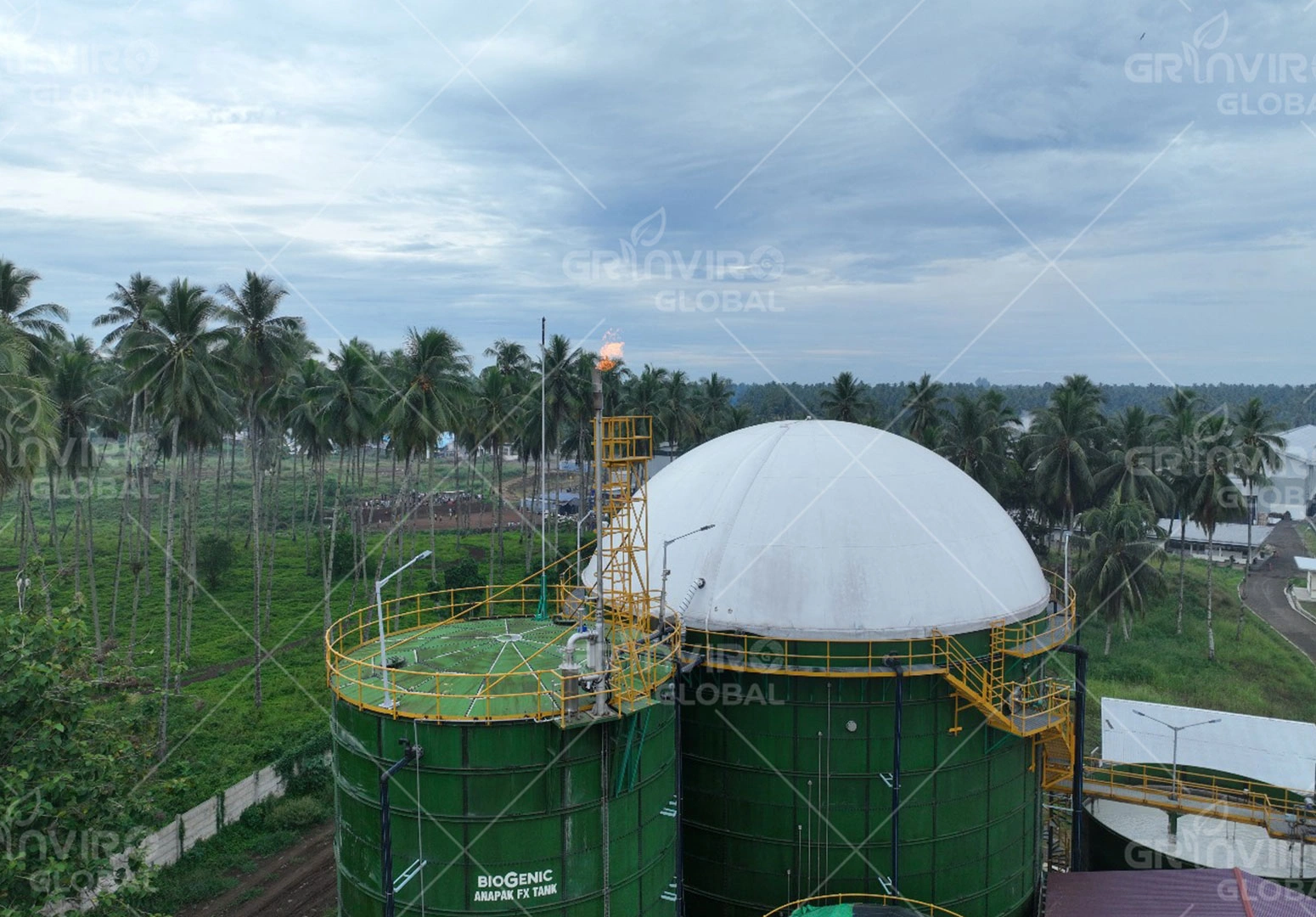The palm oil industry, one of the most significant agricultural sectors globally, has been facing increasing pressure to adopt more sustainable practices. One of the most challenging by-products of this industry is Palm Oil Mill Effluent (POME), a highly polluting wastewater generated during the palm oil milling process. However, innovative treatment methods, particularly those grounded in the principles of the circular economy, are offering new solutions for the industry. Recycle POME wastewater treatment is one such approach that not only mitigates environmental impact but also turns waste into a valuable resource, ensuring a more sustainable future for the palm oil industry.
Understanding POME and Its Environmental Impact
POME is a by-product produced in large quantities at palm oil mills. It consists of a combination of oil, water, and various organic materials, which when not properly treated, can lead to severe environmental issues. The high levels of biochemical oxygen demand (BOD), chemical oxygen demand (COD), and suspended solids make POME water treatment highly polluting. Improper disposal of this effluent can result in the contamination of water bodies, depletion of oxygen in aquatic environments, and damage to biodiversity.
Given the environmental challenges posed by POME, effective treatment of this wastewater is a priority. However, this is not just about mitigating environmental harm; it’s about transforming POME into a resource that can be harnessed for other purposes, such as energy generation, organic fertilizers, and bioproducts.
The Circular Economy Model
The concept of the circular economy (CE) aims to create a closed-loop system where resources are reused, recycled, and regenerated, minimizing waste. In the context of the palm oil industry, adopting a circular economy model for POME treatment means looking at waste as a resource rather than something to be discarded. The idea is to recover as much value as possible from POME through various processes, such as biogas production, nutrient recovery, and reuse of treated water.
This approach has several benefits, both from an environmental and an economic perspective. It aligns with the growing global demand for sustainable industrial practices and presents new business opportunities in areas like renewable energy and waste-to-value technologies.
Recycle POME Wastewater Treatment Techniques in the Circular Economy
Several innovative techniques are emerging that combine effective wastewater treatment with resource recovery. These methods not only treat POME but also generate valuable by-products that can be reintegrated into the mill’s operations or used externally. Let’s explore some of the leading methods for recycling POME water treatment.
-
BIOGENIC ANAFLOAT Digestion for Biogas Production
One of the most common and effective methods for recycling POME wastewater treatment is anaerobic digestion. Grinviro has developed the innovative technology for POME using BIOGENIC ANAFLOAT System. In this process, POME is treated in an oxygen-free environment by microorganisms that break down organic matter, producing biogas (mainly methane). The biogas generated can be used as a renewable energy source to power the palm oil mill, reducing the mill’s dependency on external energy sources and contributing to a reduction in greenhouse gas emissions.
The digestate, a by-product of anaerobic digestion, can also be further processed and used as organic fertilizer for palm oil plantations, closing the loop in the circular economy. This not only solves the issue of waste disposal but also turns POME into a valuable energy source and fertilizer.
The Benefits of Recycling POME Wastewater Treatment
1. Environmental Sustainability
Recycle POME wastewater treatment reduces the environmental impact of palm oil mills by eliminating harmful wastewater discharge. Techniques such as anaerobic digestion and MBR allow for the recovery of valuable resources from the effluent, significantly lowering the carbon footprint of the industry.
2. Economic Benefits
By turning waste into a resource, palm oil mills can reduce operating costs. The generation of biogas for energy production can decrease energy bills, while the production of organic fertilizers can be sold or used within the plantation. In some cases, treated water can even be reused, further reducing costs associated with water procurement.
3. Regulatory Compliance
As global environmental regulations become stricter, palm oil mills adopting circular economy principles are better equipped to comply with increasingly stringent wastewater treatment and environmental protection laws. This compliance not only avoids penalties but also boosts the industry’s reputation among consumers and investors who prioritize sustainability.
Conclusion
The palm oil industry faces significant challenges in managing palm oil wastewater treatment, but with the application of circular economy principles, these challenges can be turned into opportunities. ANAFOAT Recycle POME wastewater treatment is not just a technical solution but a paradigm shift that enables palm oil mills to recover valuable resources, reduce environmental impact, and improve economic efficiency. As the industry continues to innovate, the adoption of these sustainable practices will play a pivotal role in shaping the future of palm oil production and ensuring its place in a greener, more sustainable world.
WhatsApp: +62823-4811-4479
Visit Us:
- The Prominence Office Tower, Jl. Jalur Sutera Barat, Tangerang
- Jl Utama Modern Industri Blok AA No.5, Kawasan Modern Industri Cikande
- Ciputra World Office Surabaya Lt. 29, Jl. May


